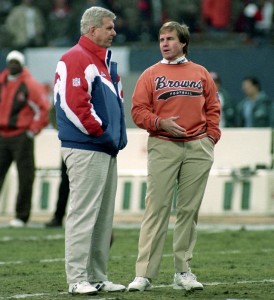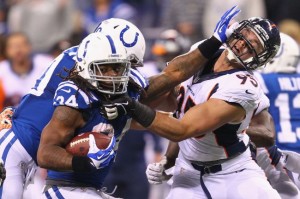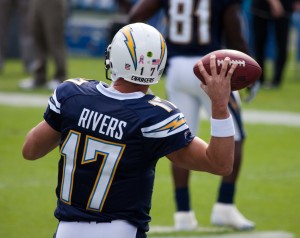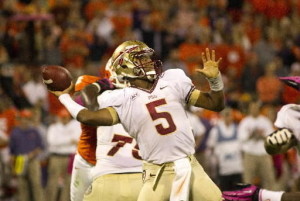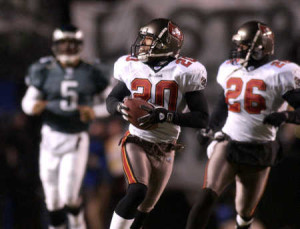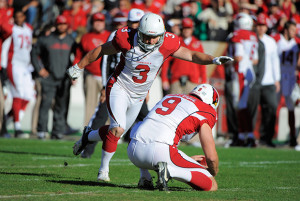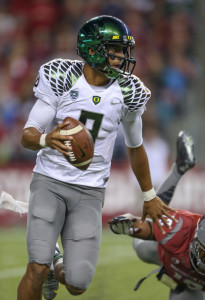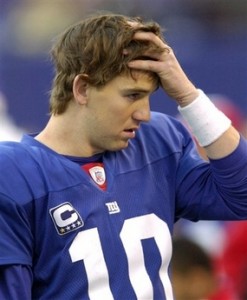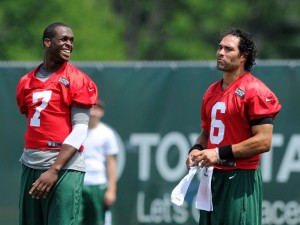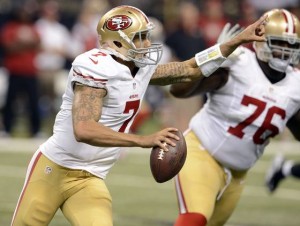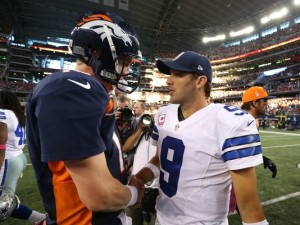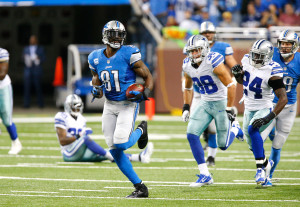
Cowboys defenders know the back of their hands like the back of Megatron's jersey.
On Sunday,
Calvin Johnson picked up 329 receiving yards
against the Cowboys, the second most receiving yards in a single game after
Flipper Anderson’s 336 yards in
1989 against the Saints. But when I think of the greatest games by a receiver of all time, my mind instantly goes to a performance by Kansas City’s
Stephone Paige in a game in
December 1985 against the Chargers. Regular readers will recall that this summer, Neil Paine and I
developed a statistic known as
True Receiving Yards. You can see a list of the leaders in TRY since 1950
here, but today I want to apply that same methodology on the single-game level. After crunching the numbers, Paige comes in at #2, Megatron’s performance comes in at #11, and
Anderson is all the way down at #26. Why? How? Glad you asked. And I’ll keep the top spot a secret for now, in case anyone wants to guess.
1) First, we convert receiving yards into Adjusted Catch Yards by giving a five-yard bonus for receptions and a 20-yard bonus for touchdowns. Johnson had 419 ACY against the Cowboys, tied with Jerry Rice (against the ’95 Vikings) for the third highest mark since 1960. The top spot belongs to Anderson at 431 (and personal favorite Jimmy Smith holds the number two spot for his performance against the 2000 Ravens). Paige — who produced an 8-309-2 stat line — totaled 389 Adjusted Catch Yards.
2) Next, we convert back to receiving yards by multiplying each receiver’s ACY by the league average ratio of receiving yards to Adjusted Catch Yards in that season. The point of using ACY instead of receiving yards is to include things other than receiving yards, but we still want to convert back into receiving yards. In 1985, the ACY/RecYd ratio was 0.66, in ’89 it was 0.66, and through eight weeks, that number is 0.65 in 2013, so not much is changing here. After step two, Anderson is at 286.6 receiving yards, Johnson 270.9 yards, and Paige 258.0 yards.
3) The third step is the pass attempts adjustment. The league average team team this year has averaged 38.7 attempts (including sacks) in 2013, while Matthew Stafford had 49 dropbacks yesterday. This means the Lions passed 26.6% more often than the average team. So what sort of adjustment do we make? In True Receiving Yards version 2.0, we split that number in half. I tried that here, and honestly, the numbers just didn’t look right — the top of the list was almost exclusively players on teams that had 10 or 12 pass attempts in that game. So instead of contracting the difference between pass attempts and league average pass attempts by two, I’m going to do it by three. So Johnson only gets downgraded to 91.1% of his production, or 246.9 yards.
Anderson’s record-breaking performance came in overtime in a game the Rams trailed by 14 entering the fourth quarter. As a result, Jim Everett had 57 dropbacks in a time period when 34.5 attempts was the norm. So with Los Angeles having 65.3% more attempts than the average team that year, we have to lower Anderson from 286.6 to 224.1.
Paige, meanwhile, goes far in the other direction. The Chiefs took a 35-3 second quarter lead that day — in no small part due to Paige’s touchdown receptions of 56 and 84 yards — so Kansas City was limited to just 24 dropbacks. The average number of dropbacks in ’85 was 35.1, putting the Chiefs at just 68.4% of league average. Therefore, we bump up Paige by 15.4%, vaulting him from 258 yards to 297.9.
4) The final adjustment is the era adjustment. I’m going to use a different way to incorporate era adjustments here, because while passing yards have shot through the roof, the value of a team’s #1 wide receiver has been much less volatile. So I used the following baseline for each year: the number of Adjusted Catch Yards in the Nth best receiving game, when 2N = the number of team games in that season. So in modern times, with 512 games, this means the 256th highest ACY total in that season is the baseline; in 2011 and 2012, that was 135 Adjusted Catch Yards. From 1960 to 2012, the average was 124.3.
So what we do now is multiply each receiver’s score from step three by the baseline for that year, and divide by 124.3. I will use the same 135 as the baseline for 2013, which brings Megatron to 227. The baseline in ’89 was 130, so Anderson goes to 214.3, and in ’85, the baseline was 125, so Paige only drops to 296.2.
If you’ve made it this far, then maybe I’m not a complete idiot for putting the fine print up front. Without further ado, here are the top 250 performances since 1960 using this formula:
[continue reading…]


